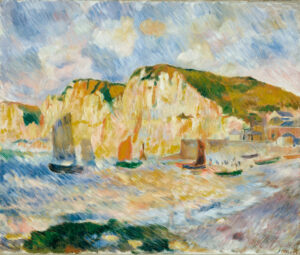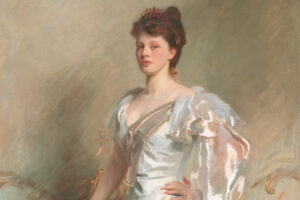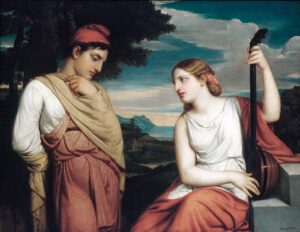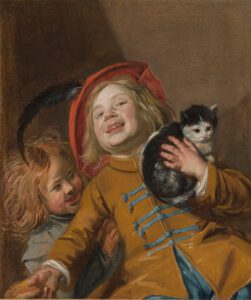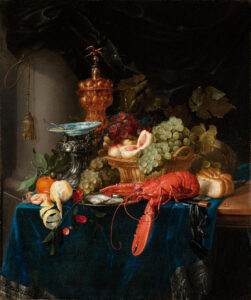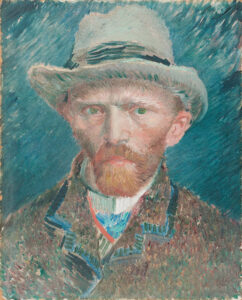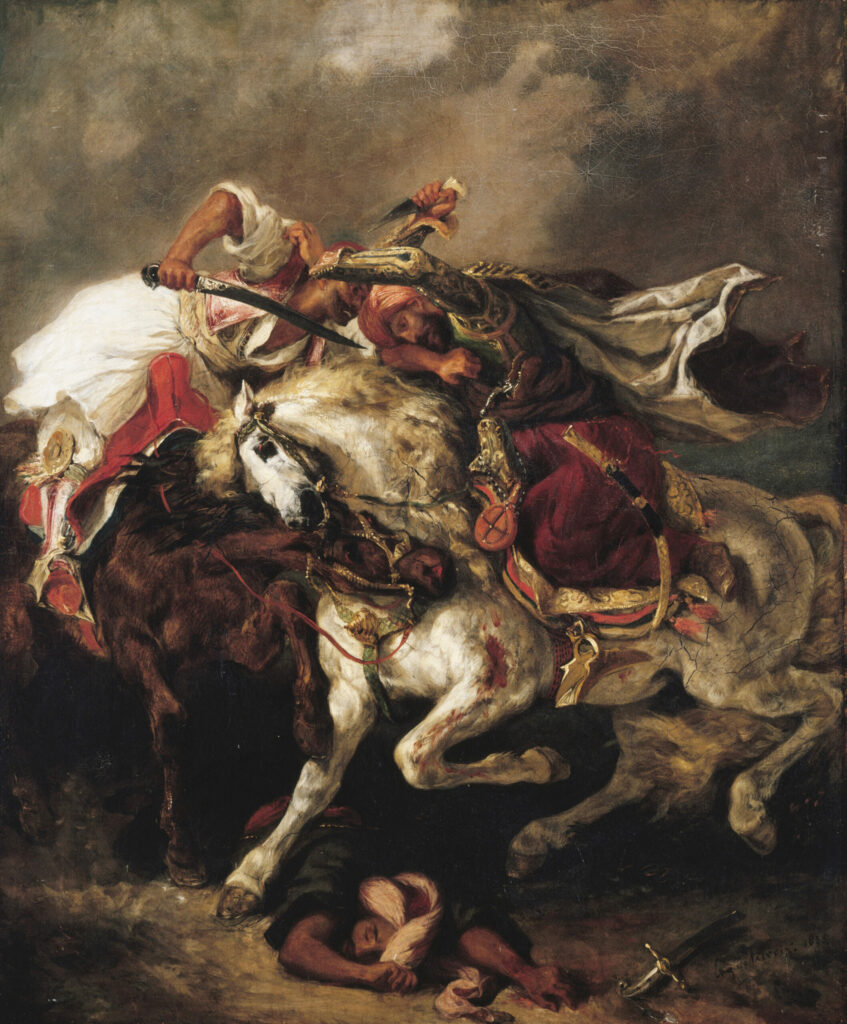
The Giaour and the Pasha: A Tempest of Human and Equine Fury. In this powerfully charged canvas, Delacroix plunges us into the heart of a confrontation where human rage intertwines with that of beasts.
Drawn from a poem by Lord Byron, the work immediately captivates through its dynamism: the intertwined bodies of the combatants and their mounts form an ascending spiral that magnificently expresses the violence of the moment.
The painter displays his chromatic virtuosity, orchestrating an incandescent dialogue between the bloody reds of garments, wounded flesh, and the pearly white of the pasha’s steed. The vigorous, vibrant, almost feverish brushwork conveys the extreme tension of the scene, while the dramatic chiaroscuro, bathing the whole in a stormy atmosphere, reinforces the emotional intensity of the combat. Remarkable is Delacroix’s ability to capture the bestial nature of the confrontation: the horses fully participate in the duel, rearing in an entanglement of limbs that reflects the savagery of a long-awaited vengeance.
Work Details
- “The Combat of the Giaour and the Pasha” by Eugène Delacroix, 1835
- 73 x 61 cm (28.7 x 24 in.)
- Paris Musées, Petit Palais, Museum of Fine Arts of the City of Paris, exhibited on the Ground Floor, Room 23
- https://www.parismuseescollections.paris.fr/fr/petit-palais/oeuvres/le-combat-du-giaour-et-du-pacha
Eugène Delacroix (1798-1863) established himself as the undisputed leader of French pictorial Romanticism. He revolutionized the art of his time through his creative freedom and colorist sensibility. His fascination with the Orient culminated during his journey to Morocco in 1832, an experience that transformed his palette and artistic vision. There he discovered a new light, vibrant colors, and scenes of life that nourished his imagination.
Opposed to neoclassical academicism, Delacroix privileged the expression of passions and emotional intensity over formal perfection. His innovative treatment of color, applied in vibrant touches rather than through modeling, and his conception of composition paved the way for the pictorial boldness that would lead to Impressionism and beyond.

